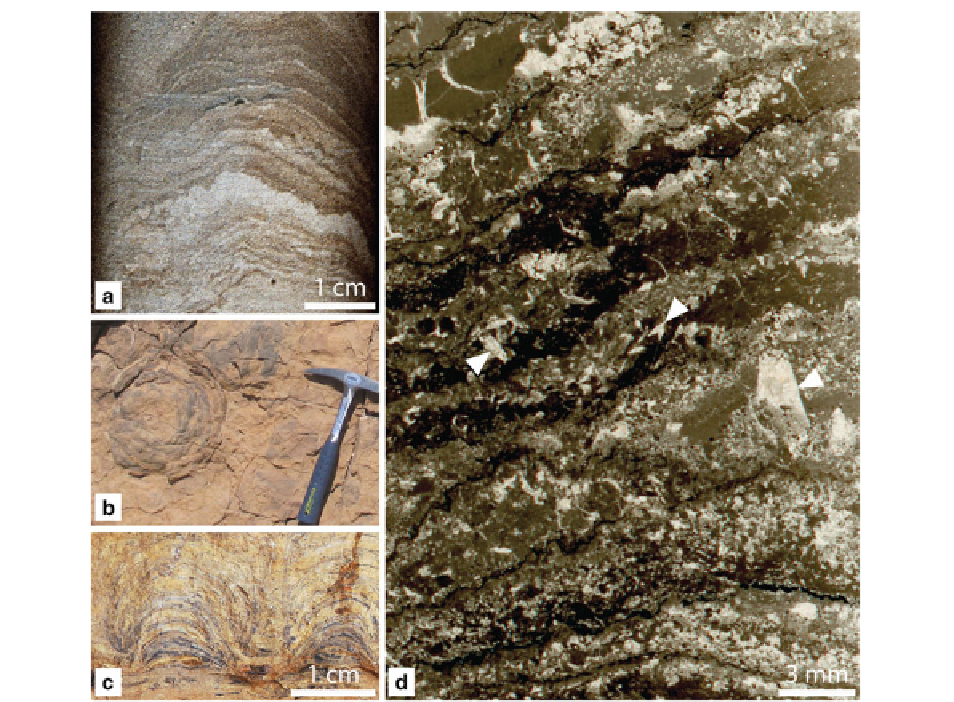Geology Reference
In-Depth Information
Fig. 21.9
Intertidal stromatolites: (
a
) Core photograph from a
dolomitized wavy to domal intertidal stromatolite; Middle
Devonian Grand Tower Limestone, Tuscola Quarry, Douglas
County, east-central Illinois. (
b
-
c
) Photographs from the upper
bedding plane (
b
) and vertical section (
c
) of a domal lower
intertidal stromatolite; Middle Cambrian member 2 of the
Mila Formation in central Alborz Mountains, northern Iran.
(
d
) Thin section photograph showing mud-cracked wavy stro-
matolite with calcite pseudomorphs after gypsum crystals
(
arrows
). Note the disrupted laminae throughout the sample as a
result of desiccation and crystal growth. Note also the geopetal
vadose sediment inside a gypsum crystal mold in the middle
right; Cave Hill Member of the Mississippian Kinkaid Formation,
western Kentucky
and narrow shapes. These cracks typically are fi lled
with sediment or carbonate cement (Demicco and
Hardie
1994
) and their walls are not generally smooth
(Figs.
21.3a, b
,
21.9d
,
21.12a
and
21.17a, b, d
). In the
supratidal facies, as a result of prolong exposure, des-
iccation related polygonal mud cracks (Figs.
21.3b
and
21.17
) are larger than those found in the arid
upper intertidal belt and on supratidal beach ridges
and levees.
Modern and ancient arid supratidal deposits gener-
ally comprise dolomudstone which may be interbedded
with gypsum/anhydrite and collapse breccias (see the
Mississippian, Middle Triassic and Miocne examples
in Sects.
21.7.4
,
21.7.5.2
and
21.7.6
). The dolomud-
stone layers are commonly fenestral and may contain
lenses, nodules or rosettes of gypsum/anhydrite or
their pseudomorphs (Figs.
21.15a, b
and
21.18
). Halite
crystals cast (Fig.
21.19c
) may be present, but are not
always indicative of supratidal conditions (see the
Middle Cambrian tidalites in Sect.
21.7.2
). In arid
supratidal sediment, microbial boundstone is normally
absent or occurs as thin crinkly and discontinuous
laminae (Fig.
21.17b
) due to dry climate, prolonged
exposure and wind energy as opposed to humid
supratidal setting. The supratidal freshwater marsh
facies in humid climates, such as the rainy tidal fl ats of
the Bahamas (Fig.
21.2b
), on the other hand, is charac-
terized by interlayered planar to wavy laminated

